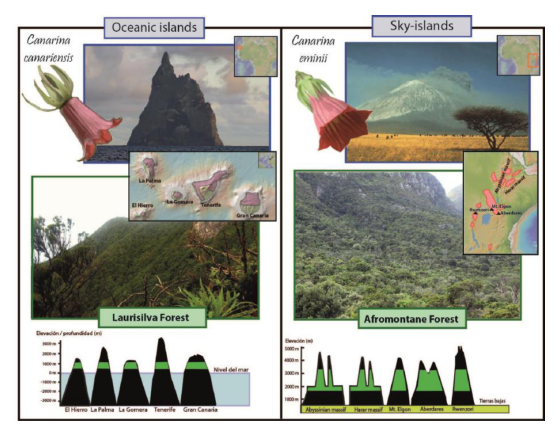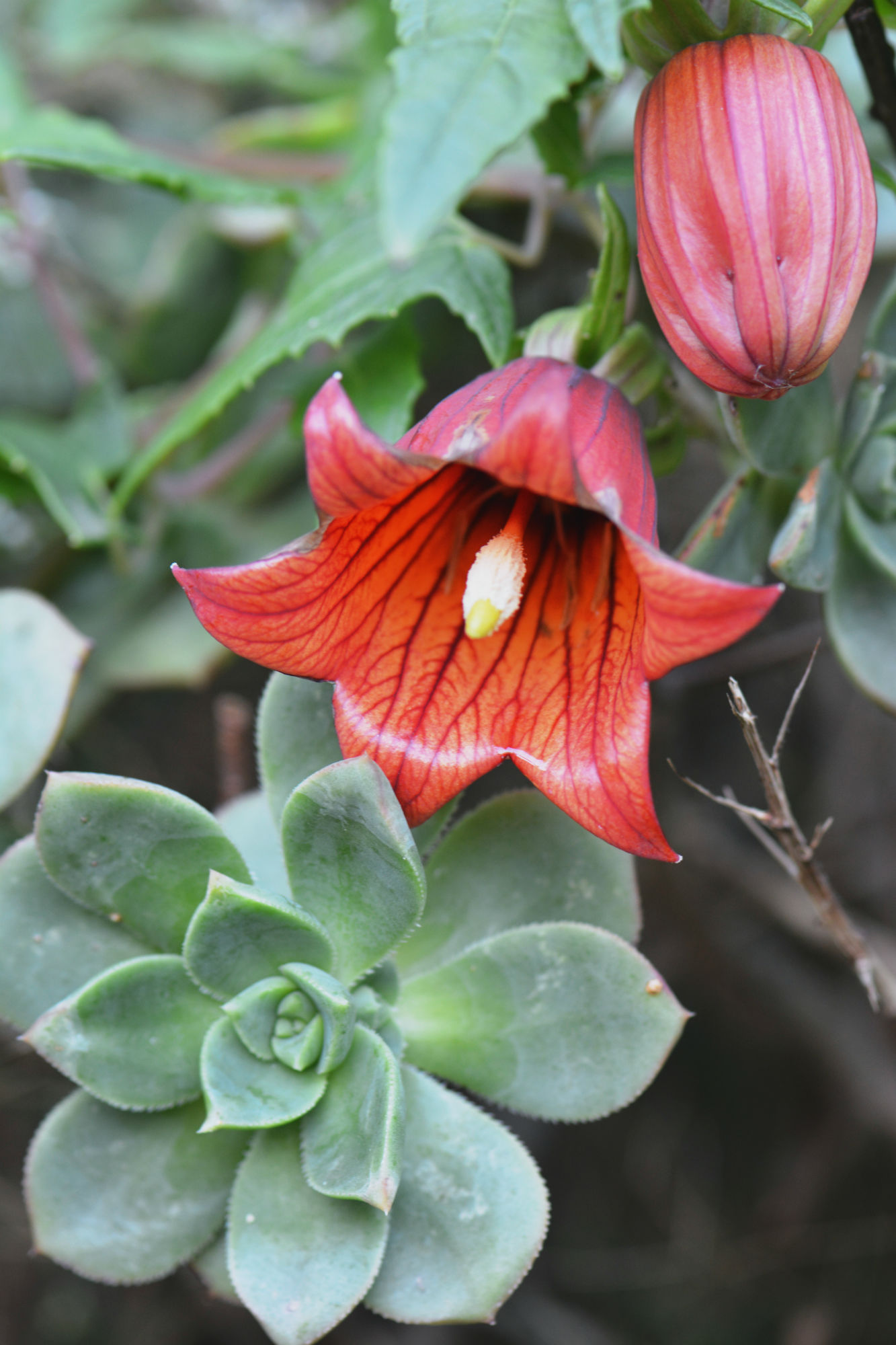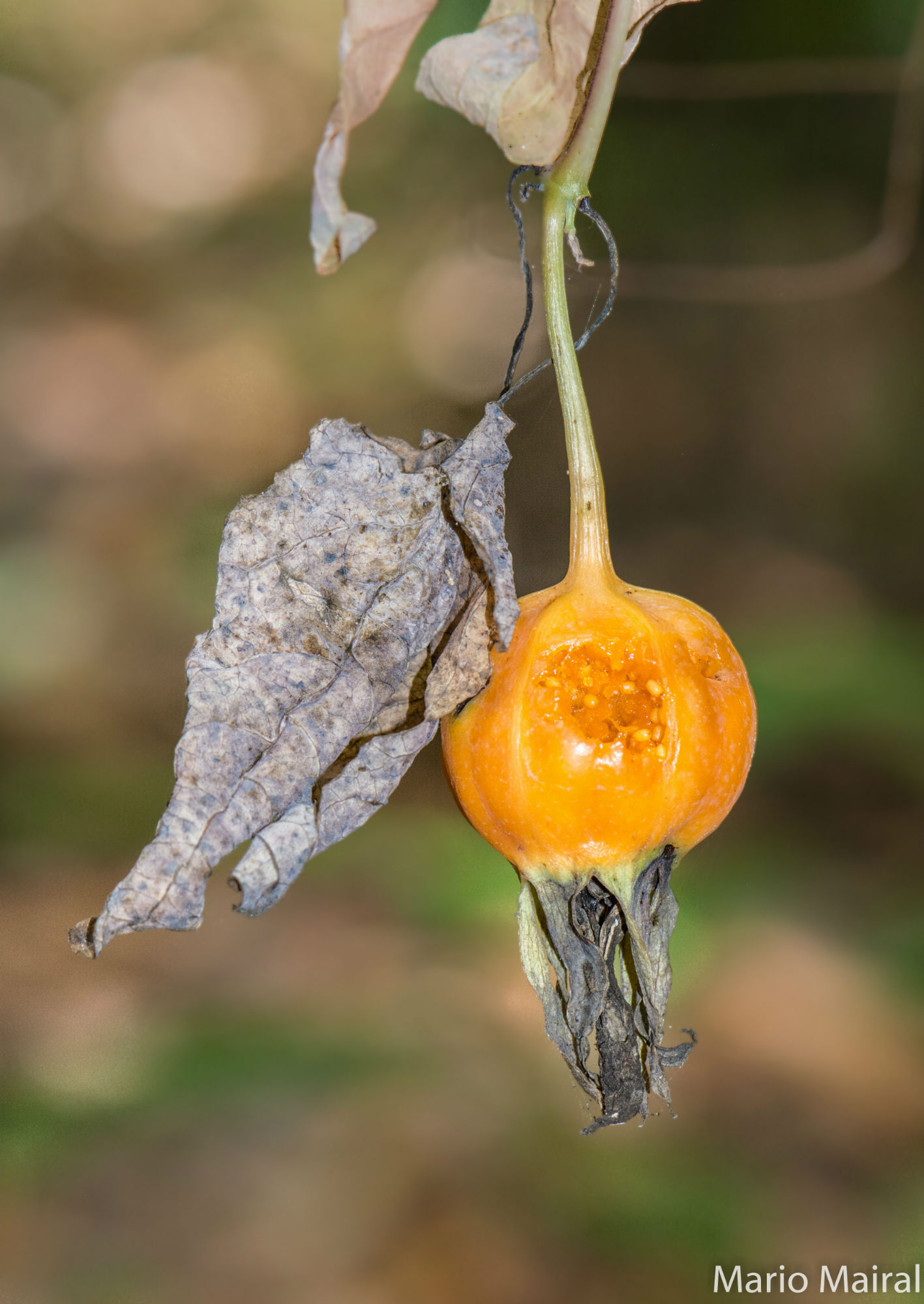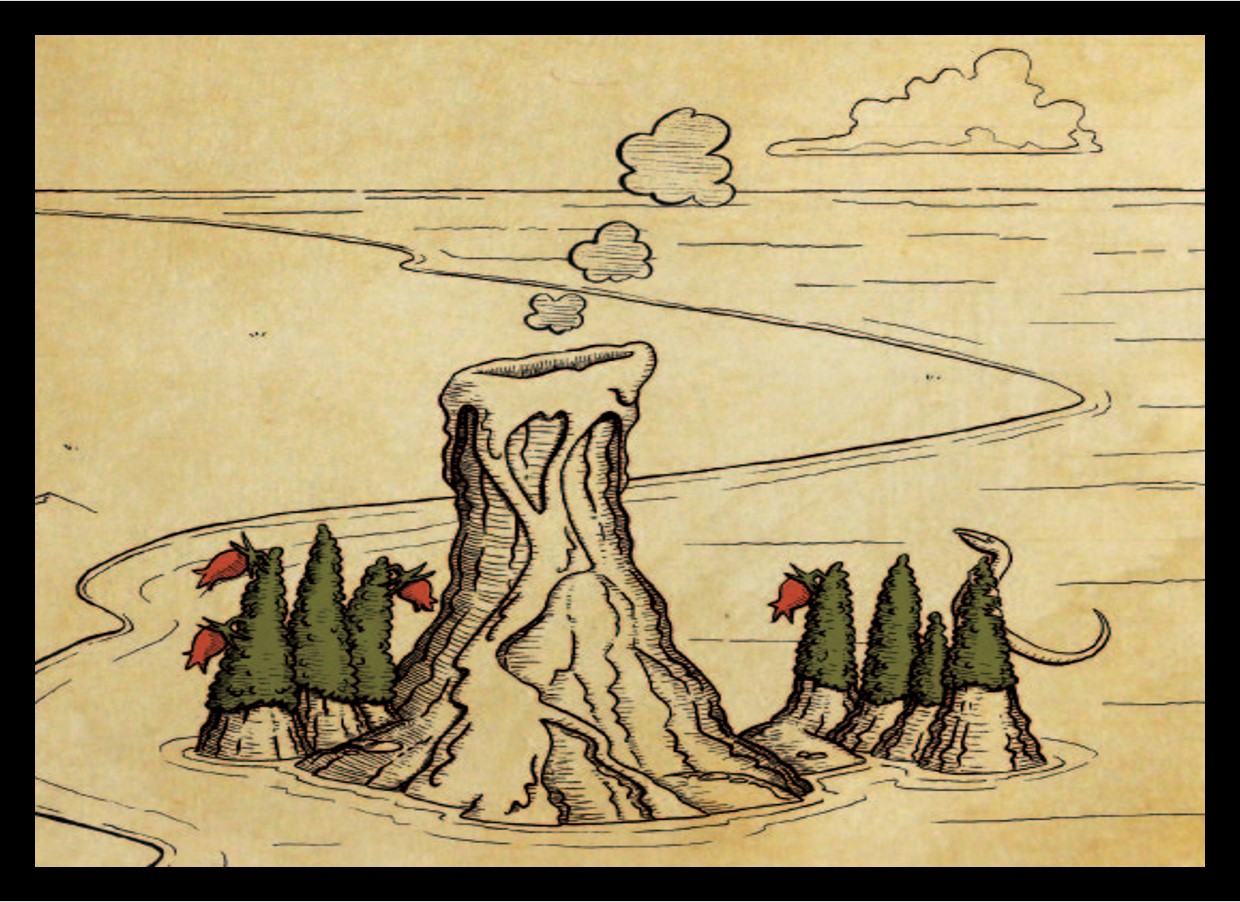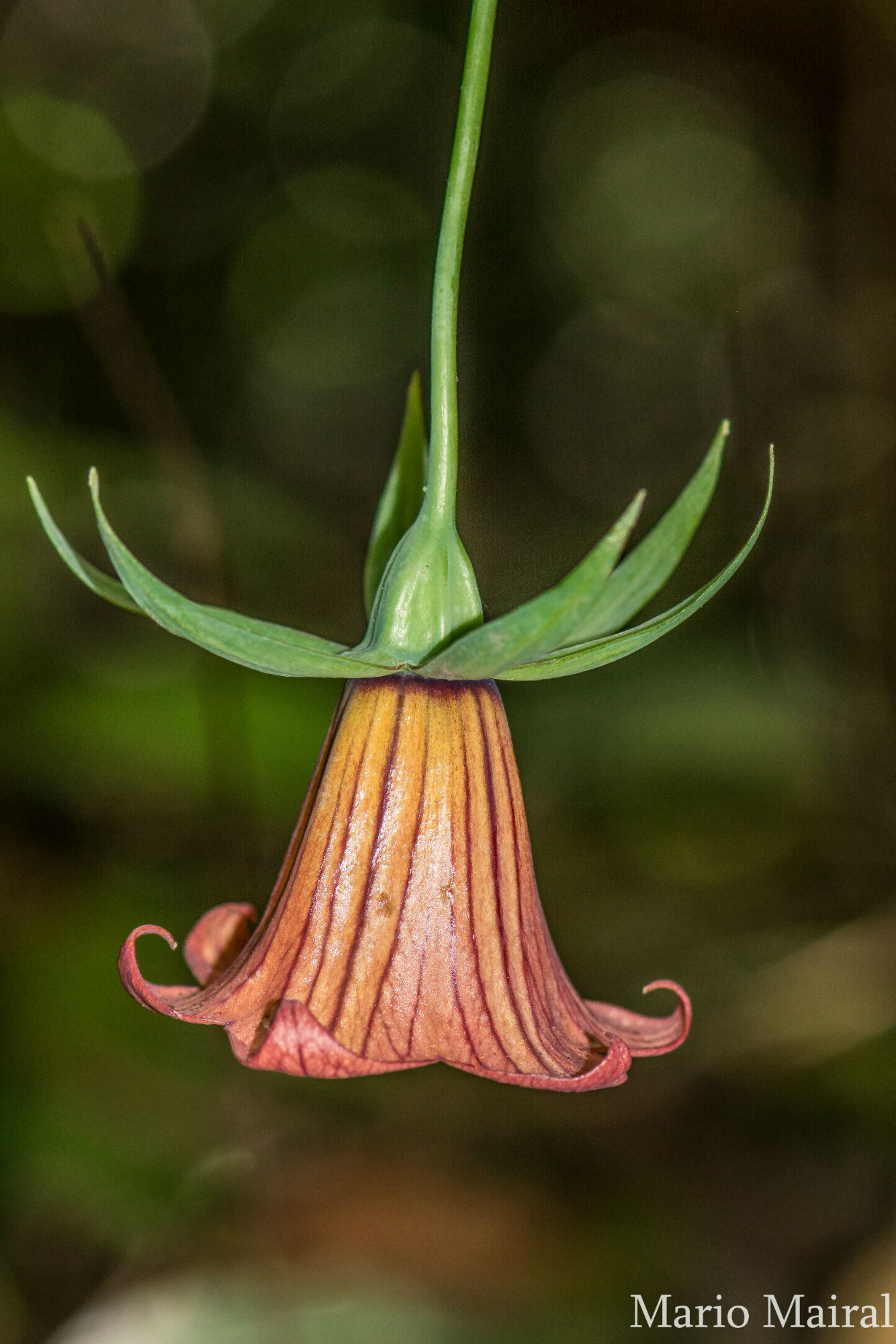Macroevolution and microevolution in island systems
My thesis was focused on macroevolution and microevolution in islands systems. I focused on understading the effects of climate change on patterns of biodiversity distribution and the mechanisms or factors underlying them. To understand the origin of biodiversity patterns, I used macroevolutionary explanations studying the relationships between organisms and their habitat at large spatial and temporal scales, and microevolutionary explanations, studying the basis of evolutionary change within species or populations locally and over shorter time spans. At macrocontinental level the African continent offered an ideal scenario since species poverty in this continent has been sometimes attributed to extinction, mediated by climate change (gradual aridification) that also presumably generated large-scale, intracontinental disjunctions.
For this I studied the Rand Flora pattern, a floristic pattern that relates angiosperm lineages sharig similar disjunct distributions across the margins of the African continent and adjacent islands (Macaronesia-west Africa, the Horn of Africa-South Arabia, east Africa and Southern Africa), offering a unique opportunity to study the effects of rapid climate change on patterns of biotic assembly.
One of the most extreme representatives of the Rand Flora pattern is the genus Canarina, a basal lineage within the Campanulaceae family. This genus comprises only three species with a widely disjunct distribution: the island-endemic Canarina canariensis is associated to the unique laurel habitat of the Canary Islands facing northwest Africa, while at the other end of the Sahara Desert, Canarina abyssinica and Canarina eminii are inhabitants of the East African Mountain forests. Thus, the distribution of Canarina species seems to be restricted to what is considered the last remnants of a subtropical vegetation that was presumably widespread throughout Africa, and which are now confined to island ecosystems on the continental margins of Africa: the Canarian species on oceanic islands, and the East African species “within-continent” islands or sky islands – geographically isolated high-altitude habitats occurring alongside different mountain ranges. The overall objective of the thesis was to study the evolutionary history of the genus Canarina and infer the macro- and microevolutionary processes that generated its current distribution. For this, I used an integrative and multidisciplinary approach encompassing macroevolutionary (phylogeny, biogeography, ecology) and microevolutionary (phylogeography, demography, population genetics) approaches.
You can find the whole thesis here:




